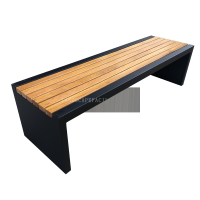Welcome to the website for landscape facilities products and knowledge.
How do landscape bar counters handle the placement of outdoor art or decorative lighting?
The seamless integration of artistic elements and functional lighting transforms ordinary landscape bar counters into captivating outdoor entertainment hubs. This sophisticated design approach requires careful consideration of environmental factors, spatial dynamics, and aesthetic harmony to create truly immersive experiences.
Successful art placement begins with understanding scale and sightlines. Large sculptural pieces work best as focal points at bar ends or behind service areas, while smaller artworks integrate beautifully into vertical garden walls or under-counter niches. Materials must withstand outdoor conditions—powder-coated metals, treated woods, and weather-resistant ceramics ensure longevity without compromising visual appeal. The strategic positioning should create visual interest from multiple angles while maintaining clear pathways for service and movement.
Lighting integration demands both technical precision and creative vision. LED strip lighting installed under counter overhangs provides both task illumination and ambient glow, while waterproof pendant lights above the bar area create intimate gathering spots. For artistic highlighting, directional well lights positioned at ground level can accentuate featured artworks without causing glare. The key lies in layering different light types—ambient, task, and accent—to build depth and dimension throughout the space.
Environmental considerations fundamentally guide all placement decisions. Lighting fixtures require IP65 ratings or higher for weather resistance, with all electrical components housed in waterproof enclosures. Art selections must endure UV exposure, temperature fluctuations, and moisture without deteriorating. Practical aspects like cleaning access, bulb replacement routes, and evening visibility patterns influence final positioning more than purely aesthetic concerns.
The most effective designs create dialogue between elements. A backlit metal sculpture might cast intriguing shadows during evening hours, while strategically positioned up-lighting can make textured stone surfaces come alive after dark. The rhythm of light and shadow becomes as important as the physical objects themselves, with careful balancing between illuminated areas and intentional darkness to create visual rest points.
Maintenance accessibility remains crucial throughout the design process. Art mounts should allow for seasonal rotation or easy removal during inclement weather. Lighting fixtures need accessible transformers and simple bulb replacement systems. This practical foresight ensures the space remains visually compelling year-round without demanding excessive upkeep.
Ultimately, successful outdoor bar designs treat art and lighting as integrated components rather than afterthoughts. The most captivating spaces emerge when illumination enhances artwork, artwork complements architecture, and all elements work in concert to create unforgettable outdoor experiences that transition beautifully from day to night.
Related search:

Recommendation
Modern Stainless Steel Begonia Wood Park Chair Outdoor Courtyard Leisure Sun Protection Bench Long Seat